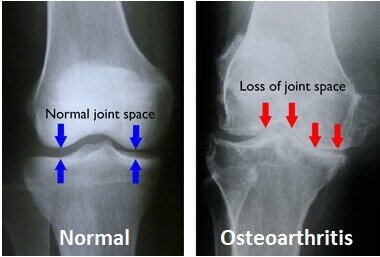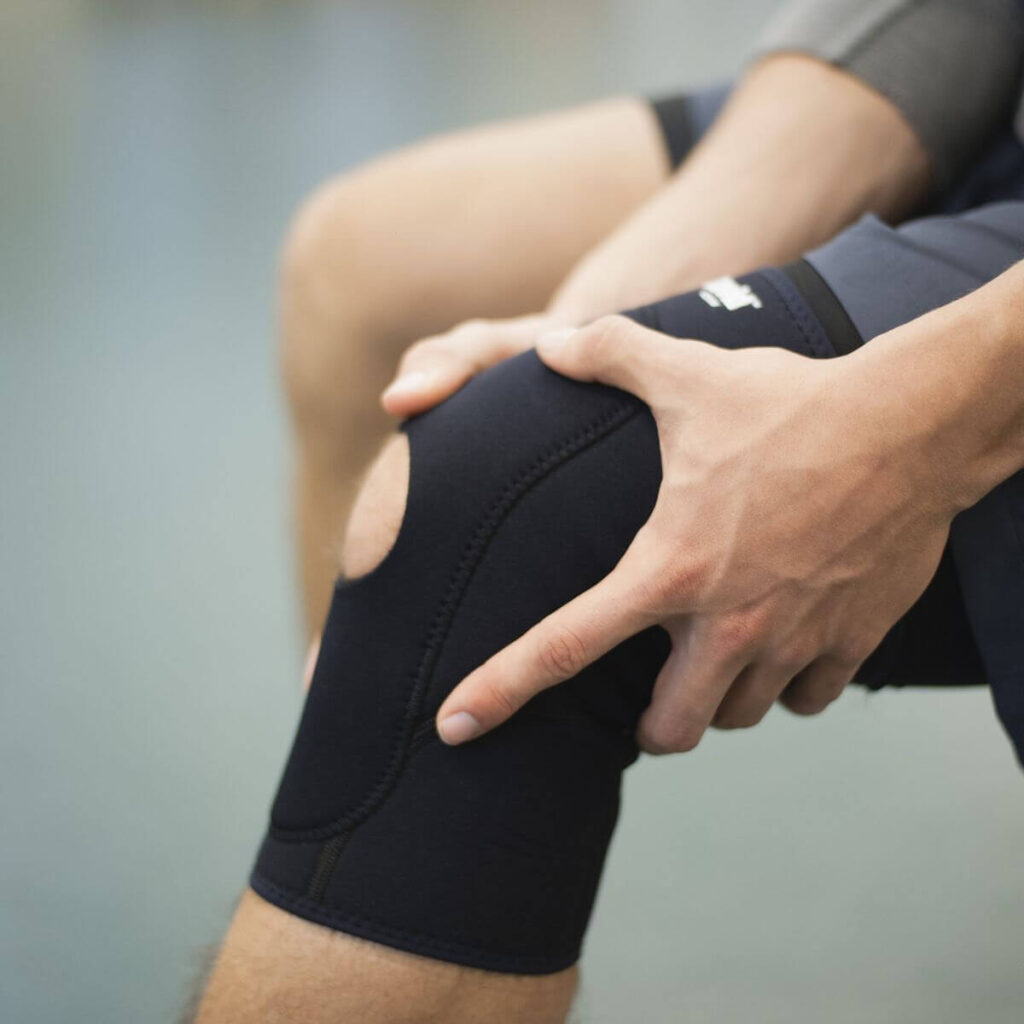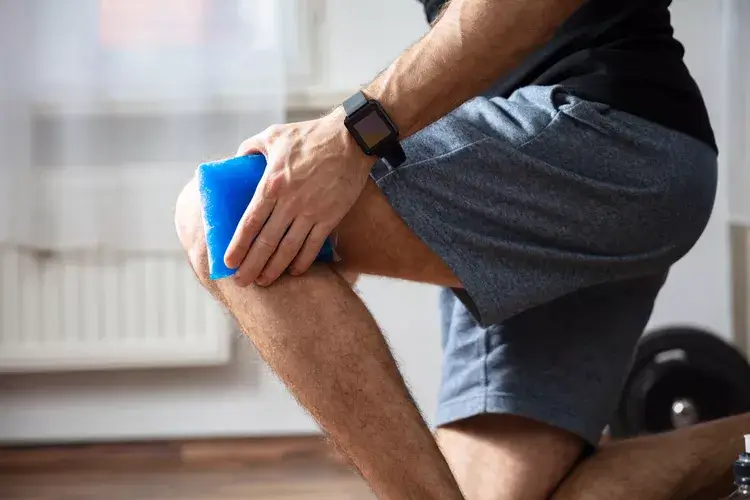Joint health is an important aspect of overall wellness, yet it is often overlooked until there is a problem. Taking proactive steps to maintain joint health can prevent future issues and improve overall quality of life. One way to do this is by embarking on a joint wellness challenge. This 30-day guide will provide you with the tools and resources to start your own joint wellness challenge and reap the benefits of improved joint health.

by Alexander Mils (https://unsplash.com/@alexandermils)
Why a Joint Wellness Challenge?
A joint wellness challenge is a great way to motivate yourself and others to prioritize joint health. By setting a specific time frame and goal, it creates a sense of accountability and encourages participants to stick to the challenge. Additionally, doing the challenge with others can provide support and motivation, making it more enjoyable and effective.
Setting Goals
Before starting your joint wellness challenge, it’s important to set specific goals. These goals should be realistic and achievable within the 30-day time frame. Some examples of goals could be to improve flexibility, reduce joint pain, or increase strength in specific joints. Write down your goals and keep them in a visible place to remind yourself of what you are working towards.
Exercise
Exercise is a crucial component of joint health. It helps to strengthen muscles and improve flexibility, which can reduce strain on joints. Incorporate a variety of exercises into your challenge, including low-impact activities like swimming or yoga, as well as strength training exercises. Aim for at least 30 minutes of exercise each day, but listen to your body and adjust as needed.
Nutrition

by Ella Olsson (https://unsplash.com/@ellaolsson)
A healthy diet is essential for overall wellness, including joint health. Incorporate foods that are rich in vitamins and minerals that support joint health, such as leafy greens, fatty fish, and nuts. Avoid processed and sugary foods, which can contribute to inflammation and joint pain. Consider keeping a food journal to track your intake and make adjustments as needed.
Rest and Recovery
Rest and recovery are just as important as exercise and nutrition when it comes to joint health. Make sure to get enough sleep each night and take rest days when needed. Additionally, consider incorporating activities like meditation or gentle stretching into your routine to promote relaxation and reduce stress, which can also impact joint health.
Tracking Progress
Tracking your progress throughout the 30-day challenge can help you stay motivated and see the results of your hard work. Consider using a fitness tracker or journal to record your exercise, nutrition, and any changes in joint pain or flexibility. This will also help you identify what is working and what may need to be adjusted for optimal results.
The 30 Day Guide
Week 1: Foundation and Mobility
Day 1:
• Hydration: Start your day with a large glass of water. Aim for 8-10 glasses daily.
• Stretching Routine: Perform a full-body stretching routine focusing on joints, especially the neck, shoulders, hips, knees, and ankles. Spend 15-20 minutes.
Day 2:
• Dietary Focus: Incorporate anti-inflammatory foods like turmeric, ginger, and omega-3-rich foods (e.g., salmon, chia seeds) into your diet.
• Mobility Exercises: Perform gentle joint rotations for 5-10 minutes. Rotate your wrists, ankles, and neck in both directions.
Day 3:
• Strength Training: Begin with bodyweight exercises like squats and lunges to strengthen the muscles around your joints.
• Posture Check: Monitor your posture throughout the day, especially when sitting. Maintain a neutral spine.
Day 4:
• Joint Supplement: Consider starting a joint supplement containing glucosamine, chondroitin, or MSM.
• Walking: Take a 30-minute brisk walk, focusing on proper foot placement and posture.
Day 5:
• Foam Rolling: Use a foam roller to gently massage your muscles, focusing on areas around your joints.
• Yoga for Joints: Practice a 20-minute yoga session that emphasizes joint flexibility, like Cat-Cow Pose and Child’s Pose.
Day 6:
• Rest and Recovery: Take a rest day from strenuous activities. Focus on gentle stretching and relaxation.
• Mindfulness Meditation: Practice a 10-minute meditation session focusing on body awareness.
Day 7:
• Balance Training: Incorporate balance exercises like standing on one leg to improve joint stability.
• Nutrition Check: Review your diet and ensure you’re getting enough calcium and vitamin D.
Week 2: Strength and Flexibility
Day 8:
• Resistance Band Training: Use resistance bands for joint-friendly strength training exercises like leg extensions and bicep curls.
• Joint-Friendly Cooking: Prepare a meal rich in antioxidants and healthy fats, such as a salad with avocado and olive oil.
Day 9:
• Pilates: Try a beginner’s Pilates session that emphasizes core strength and joint stability.
• Hydration Reminder: Increase your water intake, especially if you’re exercising more.
Day 10:
• Dynamic Stretching: Incorporate dynamic stretches like leg swings and arm circles before any physical activity.
• Foot Care: Give attention to your feet by soaking them in warm water and performing gentle stretches.
Day 11:
• Low-Impact Cardio: Engage in low-impact cardio, like cycling or swimming, for 30 minutes.
• Sleep Hygiene: Ensure you’re getting 7-9 hours of sleep to support joint recovery.
Day 12:
• Joint Protection: Learn and practice techniques for protecting your joints during activities, like lifting objects correctly.
• Herbal Teas: Introduce herbal teas such as green tea or ginger tea that have anti-inflammatory properties.
Day 13:
• Massage Therapy: Consider a professional massage focusing on the muscles around your joints.
• Breathing Exercises: Practice deep breathing exercises to reduce stress, which can impact joint health.
Day 14:
• Core Strengthening: Engage in exercises like planks to strengthen your core, which supports your joints.
• Mindful Eating: Focus on eating slowly and paying attention to your body’s hunger and fullness signals.
Week 3: Advanced Techniques
Day 15:
• Tai Chi or Qigong: Start practicing Tai Chi or Qigong to improve balance, flexibility, and joint health.
• Protein Intake: Ensure you’re consuming enough protein to support muscle and joint repair.
Day 16:
• Aquatic Exercises: Engage in water-based exercises, which are gentle on the joints while providing resistance.
• Stretch Breaks: Take stretch breaks every hour if you’re sitting for long periods.
Day 17:
• Joint-Friendly Sports: Try joint-friendly sports like swimming or cycling.
• Anti-Inflammatory Smoothie: Make a smoothie with ingredients like spinach, berries, and flaxseeds.
Day 18:
• Knee and Hip Exercises: Focus on strengthening exercises for your knees and hips, such as side leg raises.
• Journaling: Write about how your joints feel daily to track progress and identify triggers.
Day 19:
• Foam Rolling: Repeat the foam rolling session, focusing on different muscle groups this time.
• Mindfulness Meditation: Incorporate a longer meditation session focusing on pain management.
Day 20:
• Yoga: Practice a more advanced yoga session focusing on joint flexibility and strength.
• Sleep Hygiene Review: Reassess your sleep environment and make adjustments if needed.
Day 21:
• Plyometric Exercises: If your joints feel strong, incorporate light plyometric exercises like jump squats.
• Healthy Snack: Choose joint-healthy snacks like nuts, seeds, and fruit.
Week 4: Maintenance and Progress
Day 22:
• Posture Workout: Engage in exercises that improve posture, such as rows and reverse flyes.
• Vitamin C: Increase your intake of vitamin C-rich foods like oranges and bell peppers.
Day 23:
• Dynamic Balance: Practice dynamic balance exercises, such as walking lunges.
• Gratitude Practice: Write down three things you’re grateful for each day to boost mental well-being.
Day 24:
• Cardio Variety: Try a new form of cardio, like rowing or elliptical training.
• Joint Check-In: Reflect on how your joints have improved since Day 1 and adjust your routine if needed.
Day 25:
• Eccentric Exercises: Focus on eccentric movements, like slow lowering during squats, to strengthen joints.
• Omega-3 Supplement: Consider adding an omega-3 supplement if your diet lacks sufficient sources.
Day 26:
• Functional Training: Engage in functional exercises that mimic daily movements, such as step-ups.
• Mindful Eating: Continue practicing mindful eating to support overall wellness.
Day 27:
• Plyometrics: If your joints feel strong, add more intensity to your plyometric exercises.
• Joint Recovery: Apply a warm compress to any joints that feel sore after exercise.
Day 28:
• Joint Stability Exercises: Focus on exercises that improve joint stability, such as single-leg deadlifts.
• Anti-Inflammatory Foods: Double down on anti-inflammatory foods like leafy greens and berries.
Day 29:
• Restorative Yoga: Practice a restorative yoga session to give your joints a break.
• Hydration Review: Ensure you’re consistently meeting your hydration goals.
Day 30:
• Reflection and Planning: Reflect on your 30-day journey. Plan how you’ll continue joint wellness practices moving forward.
• Celebration: Treat yourself to a healthy meal or activity you enjoy as a reward for your commitment.
This guide is designed to gradually build strength, flexibility, and overall joint health while integrating holistic wellness practices. Adjust the intensity based on your personal comfort and fitness level.
Continuing the Journey
After completing the 30-day joint wellness challenge, it’s important to continue prioritizing joint health. Consider setting new goals and incorporating the habits you developed during the challenge into your daily routine. You can also continue to do the challenge with others or join a support group to stay motivated and accountable.
By following this 30-day guide, you can embark on a joint wellness challenge and improve your joint health. Remember to listen to your body, stay consistent, and celebrate your progress along the way. Have you tried a joint wellness challenge before? Share your experience in the comments below.




